Managing uniforms for your team shouldn’t feel like solving a puzzle. Whether you’re keeping track of work shirts, school sports gear, or safety equipment, you need a simple way to know what you have, who has it, and when to reorder.
A straightforward inventory spreadsheet can save you hours of headaches. Instead of digging through boxes or relying on memory, you’ll have everything organized in one place, from sizes and quantities to who’s wearing what.
We’ve created a free uniform inventory template that works with Google Sheets, Excel, and PDF, so you can start organizing immediately without any complicated setup.
Quick Jump
ToggleWhat Is a Uniform Inventory Spreadsheet?
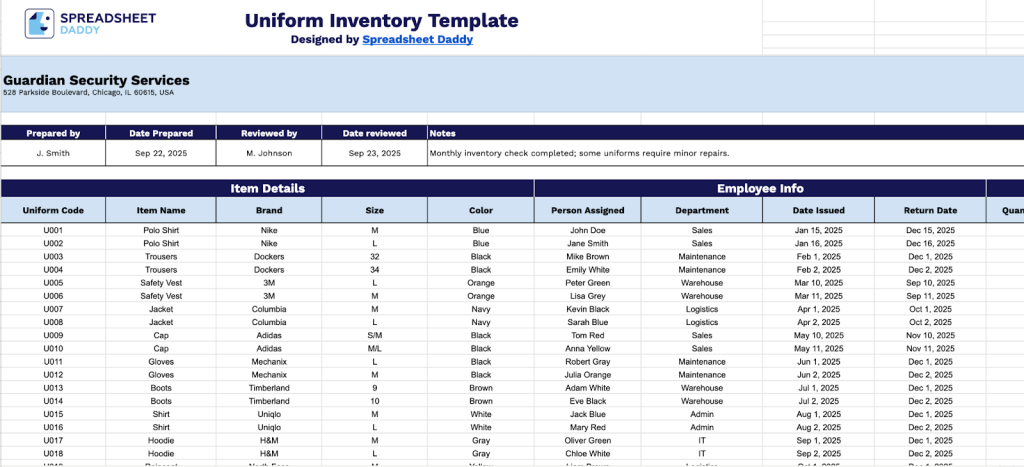
A uniform inventory spreadsheet is a tracking document that helps organizations keep tabs on the clothing and equipment they provide to their staff, students, or team members.
Using this type of spreadsheet makes it easier to stay organized, know when to reorder supplies, and keep track of who has what uniform pieces.
Download Spreadsheet Daddy’s Free Uniform Inventory Management Spreadsheet
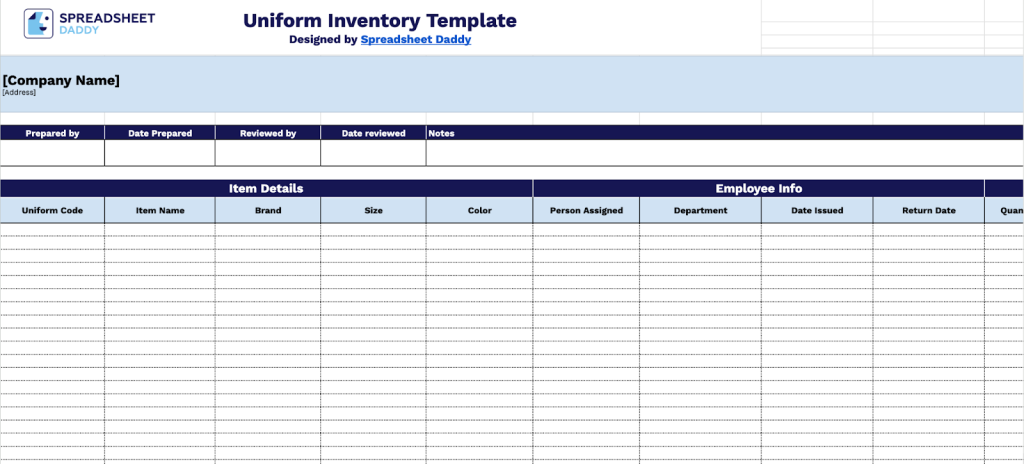
Our uniform inventory template is a comprehensive tracking system designed to efficiently manage company uniforms and work apparel.
The template can be tailored to your organization’s requirements by including or removing additional columns as needed.
What’s included
- Complete uniform tracking setup: The template provides a clean and organized way to record all your uniforms, with basic company information at the top and a straightforward table below. Each uniform is assigned its own code, item name, brand, size, and color, allowing you to track everything in your inventory system easily.
- Employee assignment and department management: Track exactly who has what uniform with dedicated columns for person assigned, department, date issued, and return date. This helps you monitor uniform distribution across your organization and ensure timely returns when employees leave or uniforms need replacement.
- Stock control and warehouse organization: Monitor your inventory levels with quantity in stock and minimum stock level fields, plus storage location tracking, so you always know where items are stored and when it’s time to reorder uniforms before running out.
- Condition monitoring and maintenance records: Keep detailed notes on uniform condition with dedicated fields for tracking repairs, replacements, and overall wear status. This helps you plan maintenance schedules and budget for uniform replacements before items become unusable.
- Supplier and purchase tracking: Complete financial oversight with supplier information, purchase dates, and cost per unit tracking. This gives you everything needed to manage vendor relationships, track spending, and make informed decisions about future uniform purchases.
How to Use Our Uniform Inventory Spreadsheet Template
1. Choose how you’d like to work with this template: copy the Google Sheets original, download as Excel, or save as PDF.
2. Fill in your establishment’s name, street address, and inventory specialist particulars with a wrap-up date. Document the manager’s title and inspection timeline. Use the Notes field to capture essential details.

3. Complete the Item Details section by entering all essential product identification and specification information:
- Uniform Code: Enter the unique identifier or SKU assigned to track this specific uniform item.
- Item Name: Record the descriptive name of the uniform piece (shirt, pants, jacket, etc.).
- Brand: Specify the manufacturer or brand name of the uniform item.
- Size: Include the size designation (XS, S, M, L, XL, or numeric sizing).
- Color: Document the specific color or color combination of the uniform piece.
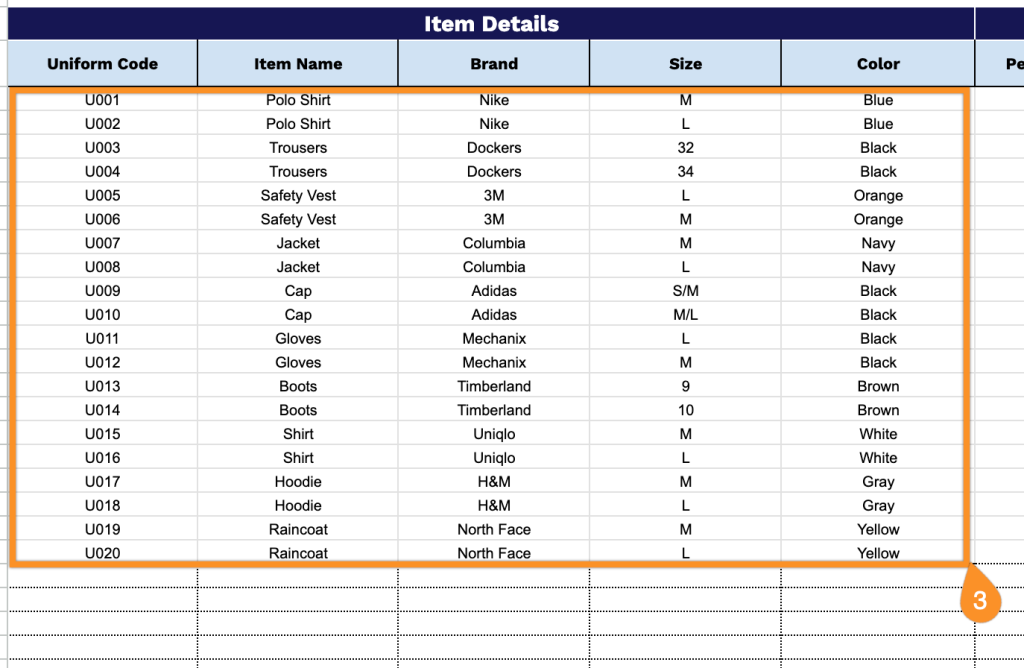
4. Fill in the Employee Information section by documenting all personnel assignments and timeline details:
- Person Assigned: Enter the full name of the employee receiving this uniform item.
- Department: Provide the specific department or division where the employee works.
- Date Issued: Record when the uniform was distributed to the employee.
- Return Date: Include the expected or actual date when the item should be or was returned.
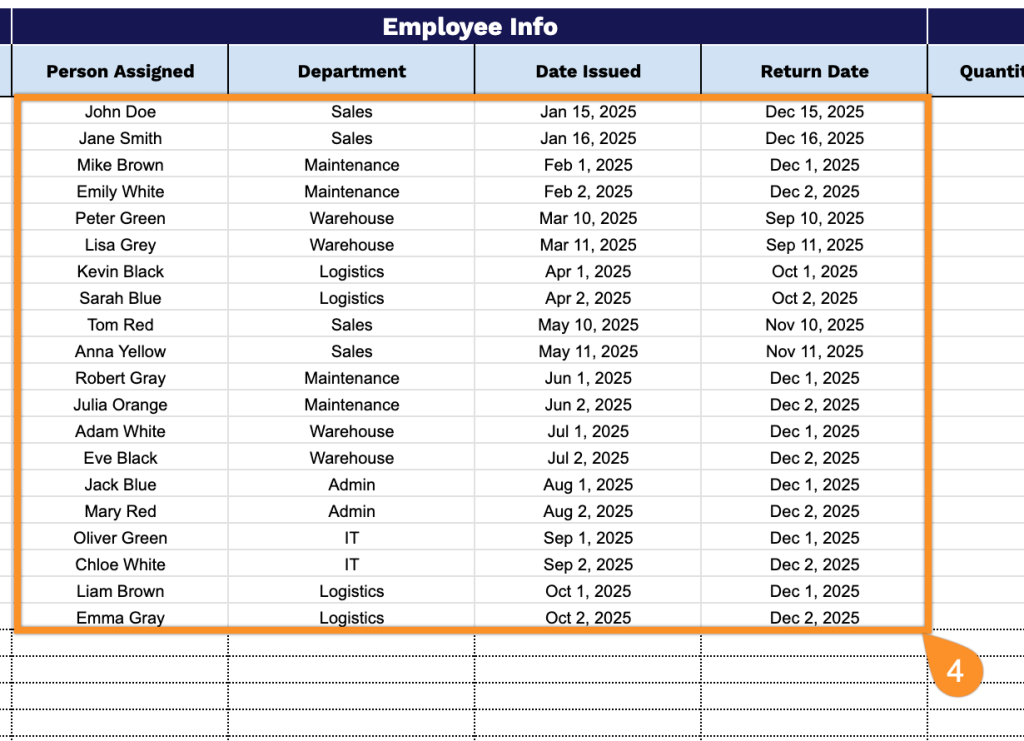
5. Document inventory levels in the Stock & Location section to ensure adequate supply management:
- Quantity in Stock: Specify the current number of units available in inventory.
- Minimum Stock Level: Set the threshold quantity that triggers reorder requirements.
- Storage Location: Specify the specific warehouse area, bin number, or storage designation where the items are stored.
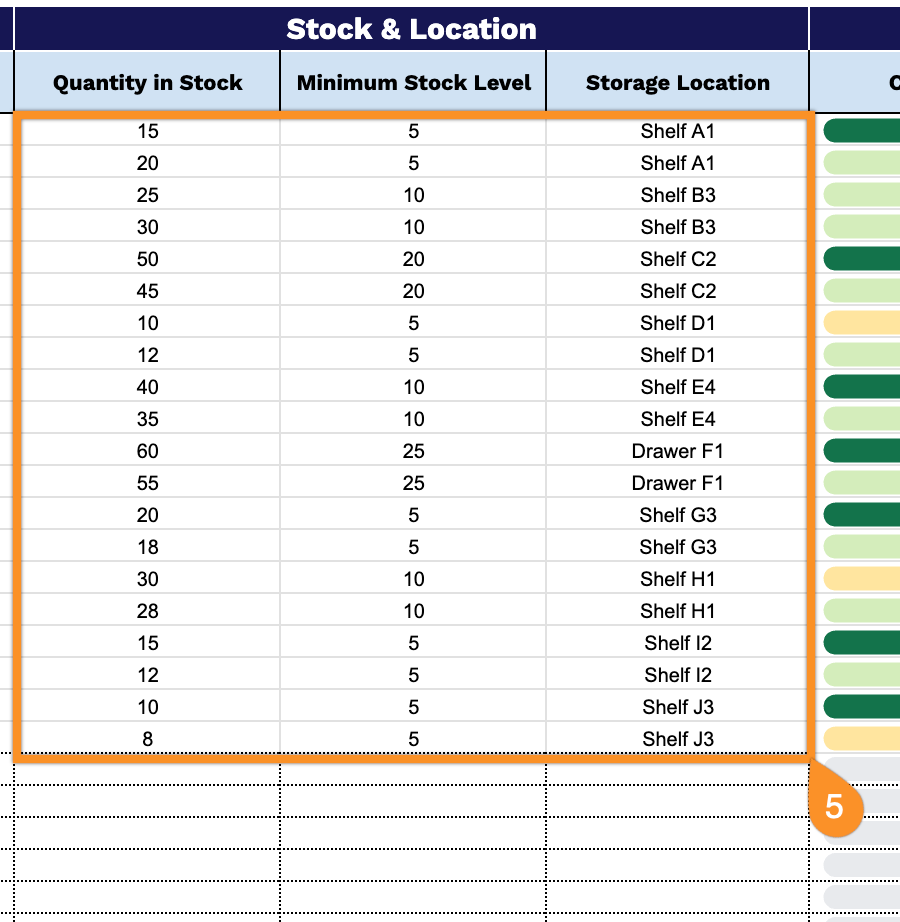
6. Track item status in the Condition & Maintenance section for quality control and replacement planning:
- Condition: Record the current state of the uniform (new, good, worn, damaged, etc.).
- Notes on Repairs or Replacements: Document any maintenance history, damage reports, or replacement recommendations.
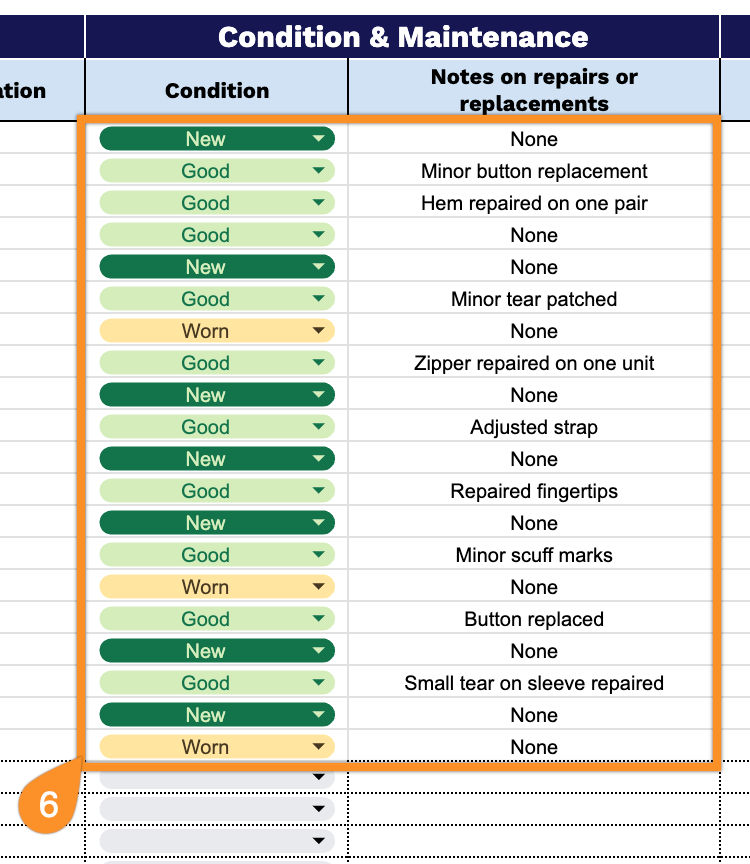
7. Manage procurement data in the Supplier & Purchase Info section for cost tracking and vendor relationships:
- Supplier: Enter the name of the vendor or company that provided the uniform items.
- Date Purchased: Record when the inventory was acquired from the supplier.
- Cost Per Unit: Include the individual purchase price for accurate budget tracking and future ordering decisions.
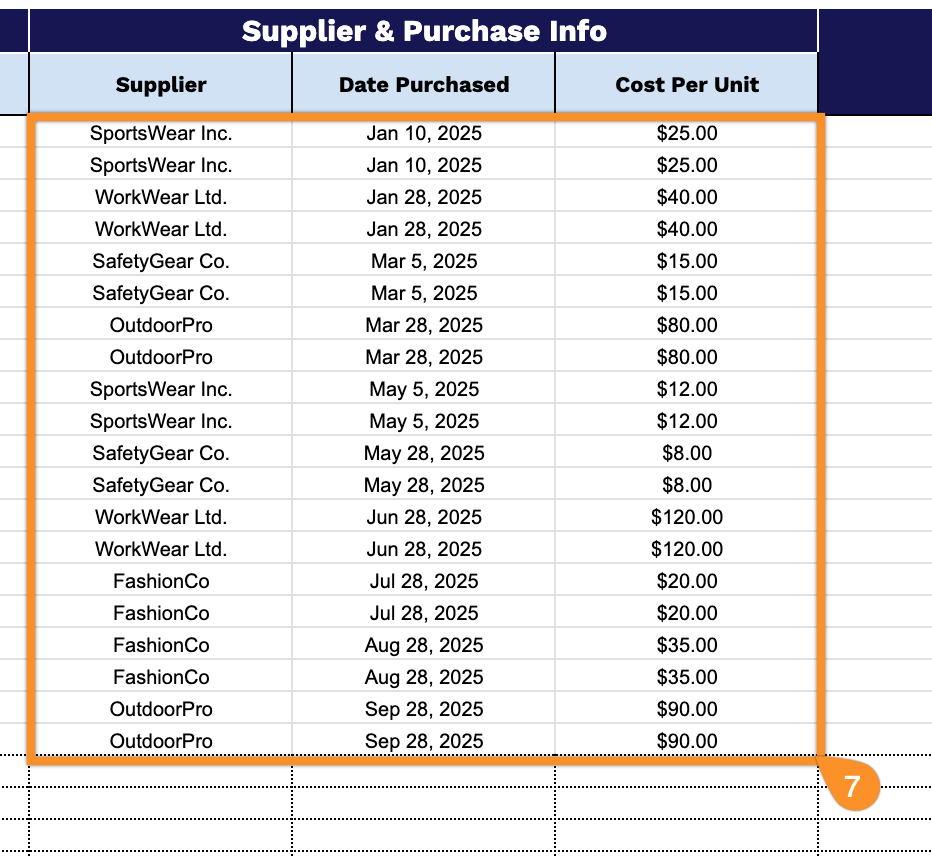
8. Add supporting information to the Notes section where appropriate.
